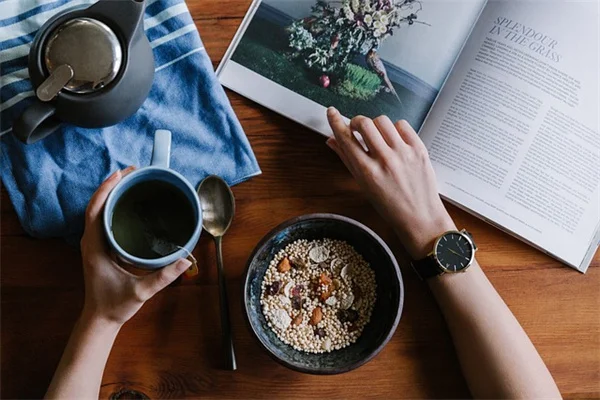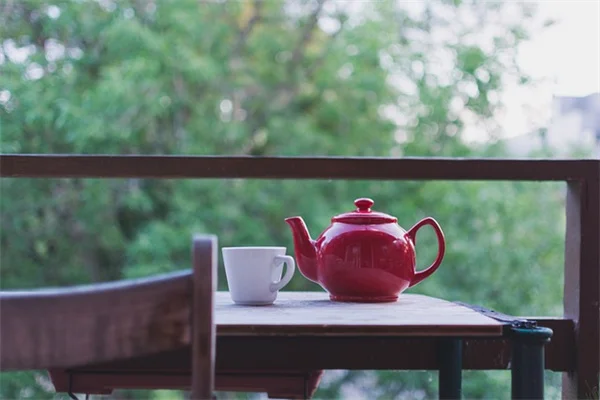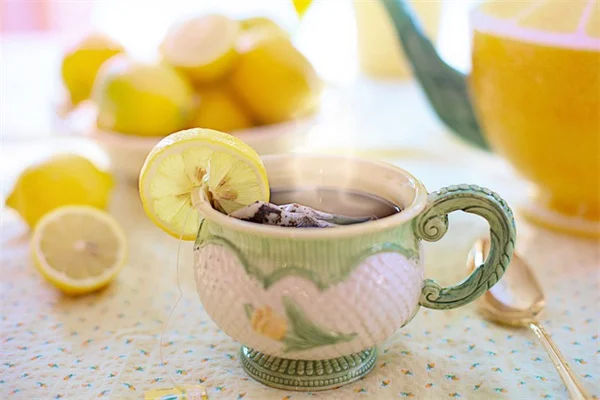Advertisement
Are opioid prescriptions linked to suicide rates? The answer is yes - and the connection is stronger than we thought. A groundbreaking new study from Columbia University reveals that areas with fewer opioid prescriptions saw lower-than-expected suicide rates, even as overall suicide numbers increased. Dr. Mark Olfson, the study's lead author, told us: This isn't just about addiction - it's about how we manage pain safely. We've dug into the research to show you exactly what this means for patients, doctors, and communities battling the opioid crisis. You'll discover why high-dose prescriptions are especially dangerous, how doctor shopping plays a role, and most importantly - what we can do to save lives starting today.
E.g. :Moderate-Intensity Statins: The Game-Changer for High-Risk Heart Patients
- 1、The Opioid Crisis and Suicide: What We Know Now
- 2、The Human Side of the Crisis
- 3、Finding Better Solutions Together
- 4、The Path Forward
- 5、The Hidden Costs of Opioid Addiction
- 6、Alternative Pain Management That Actually Works
- 7、The Power of Community Support
- 8、Technology Changing the Game
- 9、Your Role in Making Change
- 10、FAQs
The Opioid Crisis and Suicide: What We Know Now
New Research Reveals Shocking Connections
Guess what? A brand-new study just dropped some truth bombs about opioids and suicide rates. Researchers found that when opioid prescriptions go down in an area, suicide rates don't spike as much as everyone feared. This is huge news - especially since we're in the middle of the worst opioid overdose crisis in history.
Dr. Mark Olfson, the brain behind this study from Columbia University, put it perfectly: "This isn't just about numbers - it's about real people's lives." He explained that doctors need to think twice before reaching for the prescription pad. "Maybe try other pain relief methods first before jumping to opioids," he suggests. Makes sense, right?
Why High Doses Are Playing With Fire
Here's the scary part: high-dose opioids and seeing multiple doctors dramatically increase suicide risk. The researchers crunched numbers from 2009-2017 and found:
| Risk Factor | Suicide Risk Increase |
|---|---|
| High-dose prescriptions | 3.5x higher |
| Multiple prescribers | 4.2x higher |
| Long-term use | 2.8x higher |
Dr. Olfson dropped this bombshell: "If opioid prescriptions stayed at 2009 levels, we'd have seen 10.5% more opioid-related suicides in 2017." That's hundreds of lives saved just from being more careful with prescriptions!
The Human Side of the Crisis
 Photos provided by pixabay
Photos provided by pixabay
When Hope Fades Away
Dr. Steven Siwek from Arizona sees this tragedy play out daily. "Hopelessness is my regular visitor," he told me. "When patients can't see a way out of their pain, that's when things get dangerous."
But here's the good news - we're getting smarter about treatment. Instead of just throwing pills at the problem, doctors are exploring:
- Minimally invasive procedures
- Physical therapy options
- Alternative pain management
The Doctor Shopping Dilemma
Remember when people would visit multiple doctors to score more pills? That's becoming harder thanks to state databases. Peter Piraino, an addiction specialist, remembers the bad old days: "We'd see folks with 10+ doctors on their roster! Now? Maybe three - and that was a slow day."
Here's a mind-blowing stat: If multiple-prescriber rates stayed at 2009 levels, we'd have seen 19% more opioid-related suicides. That's why tracking systems matter!
Finding Better Solutions Together
Beyond the Either/Or Trap
Ever notice how debates about opioids get super polarized? Piraino nailed it: "Some say we need more opioids to prevent suicides, others say fewer. Can't we just look at the actual data?"
Michelle Sproule, a recovery expert, has a better approach: "Treat the person, not just the addiction." She explains that cookie-cutter solutions fail because they ignore:
- Financial situations
- Community support
- Cultural backgrounds
 Photos provided by pixabay
Photos provided by pixabay
When Hope Fades Away
If you're worried about someone (or yourself), here's your action plan:
- Call/text 988 anytime - the Suicide & Crisis Lifeline
- Check out local resources (I've included links below)
- Have honest conversations about pain management options
Did you know that simply asking "Are you okay?" can save a life? It's true! Many people struggling with opioid addiction feel invisible. Your concern might be the lifeline they need.
The Path Forward
Prescribing With Care
Doctors are learning that thoughtful prescribing saves lives. The study proves that when we reduce unnecessary opioid prescriptions, we don't see that feared spike in suicides. That's a win-win!
Here's my take: We need to keep pushing for:
- Better doctor education
- Smarter prescription tracking
- More treatment options
A Message of Hope
Look, I get it - this crisis feels overwhelming. But every small step matters. Whether you're a doctor, a patient, or just someone who cares, you can make a difference. The research shows we're moving in the right direction - let's keep that momentum going!
Remember: Help is always available. You're never alone in this fight. Together, we can turn the tide on this crisis - one smart decision at a time.
The Hidden Costs of Opioid Addiction
 Photos provided by pixabay
Photos provided by pixabay
When Hope Fades Away
Let me tell you about something most people don't consider - the financial devastation that follows opioid addiction. We're talking about more than just the cost of pills. When someone gets hooked, their entire financial life can spiral out of control faster than you can say "bankruptcy."
Imagine this: You're spending $200/day just to avoid withdrawal symptoms. That's $6,000/month - more than most people's rent or mortgage! And that's just the beginning. Lost jobs, medical bills, legal fees - it all adds up to what experts call "economic toxicity."
Relationships That Crumble Like Cookies
Here's a tough truth - opioids don't just hurt the person taking them. They destroy families. I've seen marriages that lasted 30 years fall apart in 3 months because of addiction. Why? Because addiction makes people lie, steal, and push away everyone who cares about them.
But get this - there's hope! Support groups like Nar-Anon help families rebuild trust. They teach loved ones how to set boundaries while still showing care. It's not easy, but it works. Just ask Maria, whose husband is now 5 years clean after nearly losing everything.
Alternative Pain Management That Actually Works
Movement Therapies You'll Love
Who knew that something as simple as tai chi could be so powerful? Studies show this gentle movement practice reduces chronic pain by up to 40%! And the best part? No prescription needed. Just show up in comfortable clothes and follow along.
Here's my personal favorite - aquatic therapy. Picture this: You're doing exercises in warm water that takes 90% of the pressure off your joints. It's like getting a massage while working out! Many patients report better results than they ever got from pills.
Mind-Body Connections That Heal
Ever heard of biofeedback? It's this cool technology that shows you how to control your body's responses to pain. You wear sensors that measure things like muscle tension, and a screen shows you real-time feedback. Before you know it, you're learning to turn down your pain like adjusting a thermostat!
And let's not forget good old-fashioned meditation. Just 10 minutes daily can change how your brain processes pain signals. Apps like Headspace make it super easy to get started. Why pop a pill when you can train your brain instead?
The Power of Community Support
Recovery Groups That Feel Like Family
Here's something beautiful - in recovery circles, your worst mistakes become your greatest strengths. When you hear someone say "I've been there too," it creates instant connection. That's why groups like SMART Recovery are changing lives every day.
Did you know many communities now have recovery high schools? These are special schools where teens in recovery can get their education surrounded by peers who understand their struggle. Graduation rates are higher than traditional schools - now that's something to celebrate!
Workplaces That Get It Right
Some companies are leading the way with amazing recovery-friendly policies. Like this construction company in Ohio that gives paid time off for treatment. Or the tech startup that holds weekly mindfulness sessions. These workplaces prove that supporting recovery isn't just good ethics - it's good business!
Here's a fun fact: Employees in recovery often become some of the most dedicated workers. They know what's at stake, and they bring that same determination to their jobs. Talk about turning pain into purpose!
Technology Changing the Game
Apps That Save Lives
Let me introduce you to some lifesavers in your pocket. There's an app called Narcan Now that teaches you how to use overdose reversal medication. Another called WEconnect helps people track their recovery progress with daily check-ins.
The coolest part? Many of these apps use artificial intelligence to spot warning signs before a crisis happens. Like if someone's sleep patterns change dramatically, the app can alert their support team. It's like having a guardian angel in your phone!
Virtual Reality Breaking the Cycle
Get ready for this - some treatment centers now use VR to help with cravings. Patients put on headsets and practice saying no to virtual drug offers. It sounds like sci-fi, but studies show it reduces relapse rates by up to 30%!
And here's something even wilder - there's VR therapy that lets people visit peaceful nature scenes when they're stressed. No expensive vacation needed - just put on the headset and transport yourself to a calming beach or forest. Your brain can't tell the difference!
Your Role in Making Change
Small Actions, Big Impact
You might think "What can I possibly do?" Well, let me tell you - plenty! Start by learning how to spot the signs of overdose. Carry naloxone if you can. Even just changing how you talk about addiction makes a difference - words matter!
Here's a simple but powerful idea - support businesses that hire people in recovery. When you spend money at these places, you're voting with your dollars for a better approach to addiction. Every purchase becomes a statement of hope.
Breaking Down Stigma One Conversation at a Time
The most damaging part of addiction isn't the drugs - it's the shame. That's why your openness to talk about it matters so much. When you share accurate information, you're chipping away at harmful stereotypes.
Think about this: Would you judge someone for having diabetes? Of course not! Addiction is a health condition too. The more we treat it that way, the more people will feel safe seeking help. And that's when real healing begins.
E.g. :Patterns of Opioid Prescribing Linked to Suicide Risk | Columbia ...
FAQs
Q: How exactly do opioid prescriptions increase suicide risk?
A: The study found several scary connections between opioids and suicide risk. First, high-dose prescriptions make people 3.5 times more likely to die by suicide. Second, having multiple prescribers increases risk by 4.2 times. Here's why this matters: opioids don't just relieve pain - they can cloud judgment and increase depression. Dr. Siwek explained it perfectly: "When patients lose hope about controlling their pain, that hopelessness can spiral fast." The good news? States that reduced prescriptions didn't see the suicide spikes experts feared - proving we can make safer choices without abandoning pain patients.
Q: What's the most surprising finding from this opioid study?
A: Hands down, it's this bombshell: If 2017 prescription rates matched 2009 levels, we'd have seen 10.5% more opioid-related suicides. That's hundreds of lives saved just from prescribing more carefully! The research team analyzed nine years of national data and found that while overall suicides increased, the opioid-related ones would've been way worse without prescription reforms. As Peter Piraino told us, this proves tracking systems work: "We used to see patients with 10+ doctors - now that's much harder thanks to state databases."
Q: How can doctors balance pain relief with suicide prevention?
A: Top experts recommend a three-step approach: First, try non-opioid options like physical therapy or minimally invasive procedures. Second, if opioids are necessary, prescribe the lowest effective dose for the shortest time. Third, check prescription databases to prevent "doctor shopping." Dr. Olfson puts it simply: "We're not saying never prescribe - we're saying prescribe smarter." The data shows this balanced approach works - patients get pain relief without the extreme suicide risks of high-dose, long-term opioid use.
Q: What should I do if someone I love is taking opioids?
A: First, don't panic - but do stay alert. Have honest conversations about their pain management plan. Ask if they've discussed non-opioid options with their doctor. Watch for warning signs like getting prescriptions from multiple doctors or taking higher doses than prescribed. Most importantly: know the crisis resources. Save 988 (the Suicide & Crisis Lifeline) in your phone right now. Michelle Sproule reminds us: "The best treatment considers the whole person - their life situation, support system, and cultural background." Your caring attention could be what saves their life.
Q: Where can I find help for opioid-related mental health issues?
A: Start with these life-saving resources: 1) Call/text 988 anytime for free, confidential help. 2) Ask your doctor about local pain management specialists. 3) Check state prescription databases if you're worried about multiple prescriptions. Remember what the research proves: help works. As Dr. Siwek told us, "When patients find stable pain control and feel heard, that hope can be life-changing." Whether you're struggling or supporting someone who is, you're not alone - and solutions exist that don't involve risking your life with dangerous opioid use.






